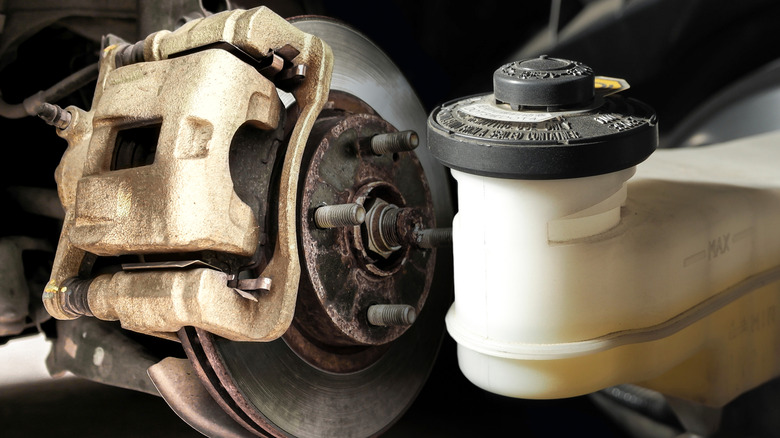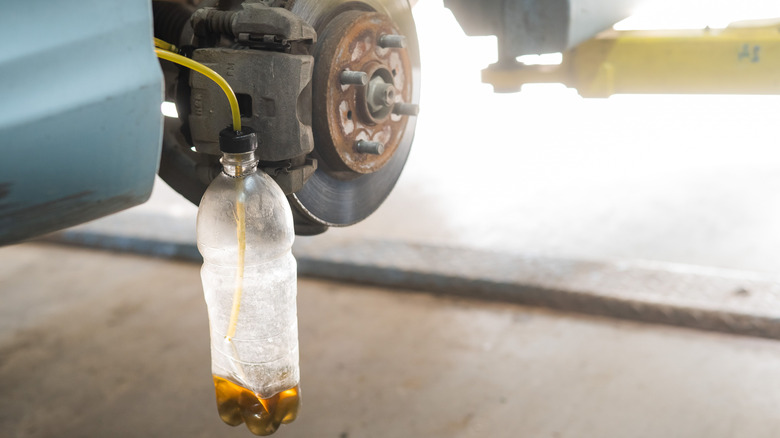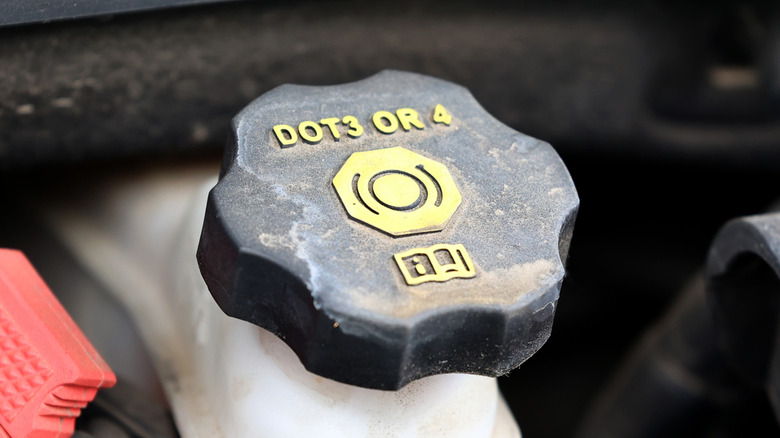Green Brake Fluid? Here's What That Means
With numerous types of brake fluid that come in a multitude of colors, being aware of what type of brake fluid you have is important to maintaining the health and long life of your vehicle. Before knowing which brake fluid is in your vehicle, you should know what brake fluid is and why it's vital to your vehicle.
Brake fluid is important because it absorbs the excess moisture around brakes, making sure the brakes smoothly close and stay clean of airborne dirt and water. The less brake fluid you have, and as the brake fluid ages, the more likely the brakes will be dirty, and your car will have worse performance. There are also a number of different types of brake fluid based on Department of Transportation recommendations. The most common brake fluid types are DOT 3, DOT 4, DOT 5, and DOT 5.1, each of which goes about its job in slightly different ways.
As for the color of brake fluid, DOT 5 fluids are typically seen as purple; DOT 5.1 fluids can be blue, clear, or yellow; DOT 4 fluids are typically yellow or a deep red; and DOT 3 fluids can be found in hues of red, blue, or green. However, just because one type of brake fluid can be green doesn't mean that it's natural for all DOT type fluids. In fact, seeing green oil can even be a sign that there's something wrong with your brake fluid.
What green brake fluid means
As mentioned, if you have DOT 3 brake fluid, which is the most common type in vehicles today, it is common for brake fluid to be green. DOT 3 brake fluids are glycol-based, which means they feature similar ingredients to antifreeze to help keep the brakes clean. DOT 4 brake fluids, on which most international vehicles run, are also glycol-based, though they contain more chemicals to allow for higher heat tolerance.
If your vehicle runs DOT 4 brake fluid, and you decide to check your brake fluid and find it to be green in color, you'll need to replace the fluid. The biggest reason why DOT 4 brake fluid turns green is due to chemical components in the fluid breaking down and interacting with the brake tubing. Most brake systems feature copper, which will turn the brake fluid green after prolonged exposure.
If you do find your brake fluid has turned green, and it's not supposed to, you should immediately contact your mechanic and set up an appointment to change it. Even so, you should change your brake fluid every two years or 30,000 miles.
What other colors mean
More often than not, drivers won't be able to tell if their brake fluid needs changing based only on the color. However, there is a tell-tale sign to notify drivers they need to get under the hood. If you find your brake fluid to be brown or black, that means you need to flush the fluid from your brake system in its entirety. The best way to determine if you need to change brake fluid is just by opening your hood, checking the brake fluid reservoir, and determining how much brake fluid is needed.
Don't worry about being unsure of which type of brake fluid your vehicle requires. Most vehicles feature markings on the brake fluid reservoir cap to help designate which type of DOT brake fluid is necessary. Information should also be in your vehicle's user manual, and the dealership should have notified you when you purchased your vehicle. Keep in mind that using the wrong brake fluid can cause serious performance issues and even damage your brakes.


